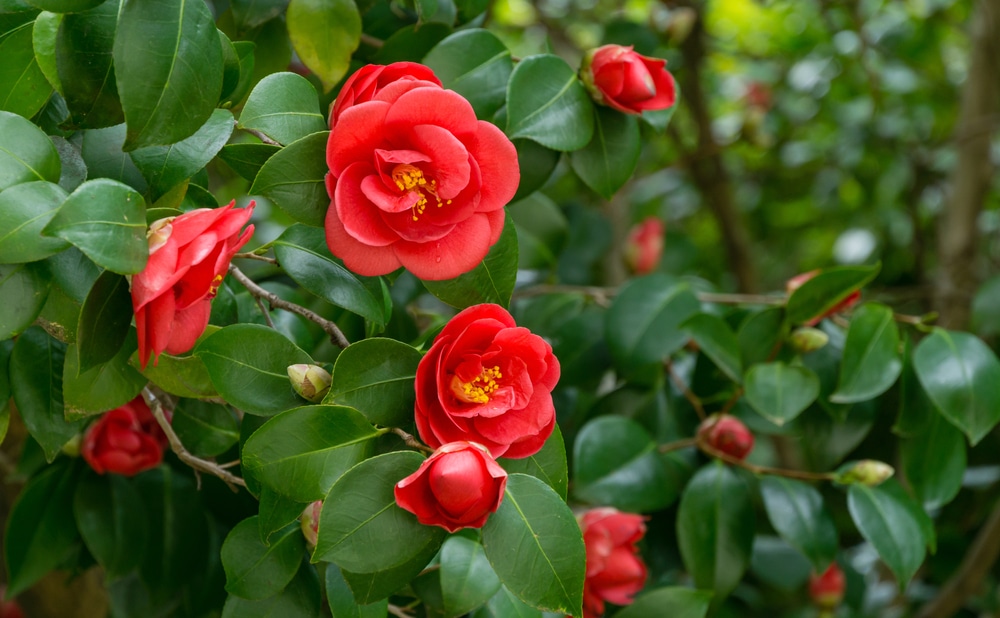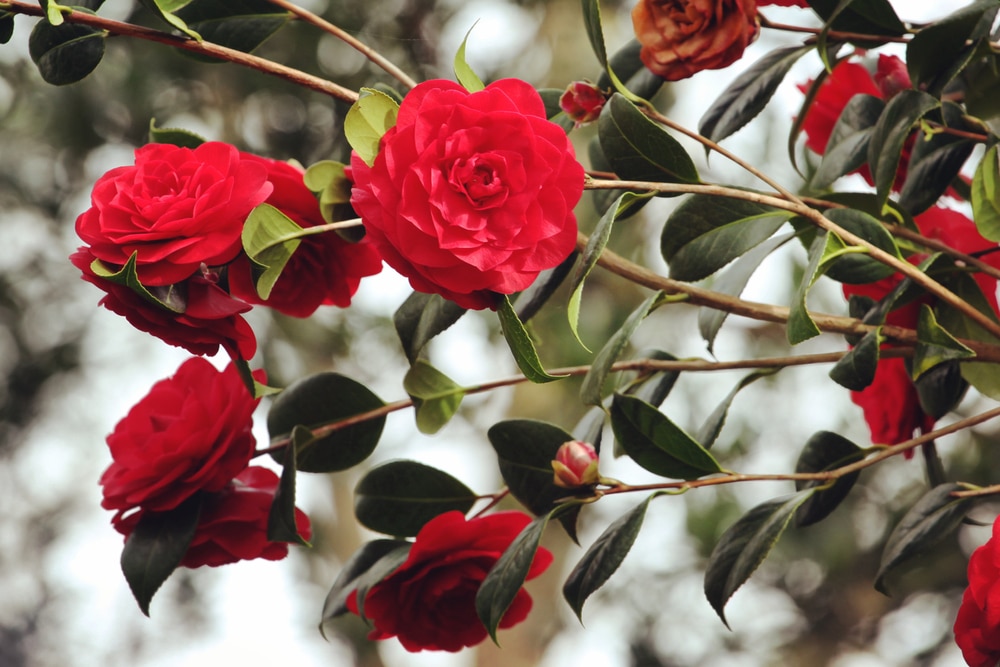Camellia Japonica Red is a beautiful plant with striking flowers. Before you get any, you need to learn their care needs as they are finicky plants. Read on to learn everything you need to know to take care of Japanese camellia.

| Botanical Name | Camellia japonica |
| Common Name | Japanese camellia, common camellia |
| Plant Type | Perennial (evergreen) |
| Flower Color | Red, pink, white, or other |
| Size When Mature | Up to 12 feet tall |
| Bloom Time | Fall, winter, spring |
| Sun Requirements | Partial sun, partial shade |
| USDA Hardiness Zones | 7-9 |
| Soil PH Range | 5-6.5 |
| Soil Type | Rich, acidic soil |
| Water Needs | Medium |
| Native Area | China, Korea, Taiwan, Japan |
What You Need To Know About Camellia Japonica Red
Japanese camellia is a flowering tree. It flowers any time from October to March. It can bloom in many colors and has thousands of cultivars specifically for all of its colors. Japanese camellia is not poisonous to people or pets, so you can rest easy with this beautiful plant in your garden.
How to Care for Camellia Japonica Red
Here’s everything you need to know about growing and caring for a thriving Japanese camellia. These plants are a joy to grow, even if they are challenging.
Light
Japanese camellias prefer a bit of shade with the sun in the morning. They don’t do well in constant direct light or constant shade.
Water and Soil Needs
Make sure not to over-water Japanese camellias. They don’t do well in wet soils.
Japanese camellia needs acidic soil that drains well. The ideal pH is 5-6.5. If it retains too much moisture, the plants will grow poorly and can develop root rot.
Temperature Requirements
Japanese camellia can survive in USDA hardiness zones 7-9. These zones cover about half of the United States. In zones six and under, the plant may die in the winter, so it is vital to make plans for it if you live in those zones.
This plant tends to go dormant in the winter to withstand low temperatures. If there is any new growth in the winter, the cold will likely kill it, resulting in the whole plant dying.
Different cultivars do well in varying areas, so make sure the cultivar you choose is suited to your hardiness zone.
Fertilizer
In the spring, you should use nitrogen fertilizer on Japanese camellia. A high-potassium fertilizer is the best fertilizer to use on a Japanese camellia in the summer. These will help the plant thrive throughout the year.
Common Diseases
One common issue with Japanese camellia is scale insects making the plant their home. You can deal with this and prevent further damage by spraying the plant with an oil that helps get rid of insects. You can use neem oil for good results. Neem oil is a naturally occurring pesticide that is a commonly used staple in gardening. It comes from the neem tree.
You may also see flower blight, which makes its flowers turn brown. Flower blight is a fungal disease. When you see this, you should remove any infected flowers to prevent the spread of the fungus. You may need to replace nearby mulch and soil, which the fungus can survive in.
Another fungal infection to look out for is canker. This disease kills branches and seriously harms the plant. To avoid this, take proper care of your camellia. Make sure its needs are met and avoid wounding the plant. To treat it, prune the plant. Remove anything that is infected. Make sure to disinfect your pruning tool between every cut to prevent further spread.
Japanese Camellia Red Propagation
The best way to propagate Japanese camellia is with a layering technique. You may not get the desired flower color if you grow this plant from a seed.
Cut into a stem at an angle and bend the branch into the soil. You can dip it in rooting hormone for faster results. Secure the branch so it stays in the ground and leave it there until it grows a sound root system. This process may take around one growing season. After that, remove it from the original plant and then plant it.

